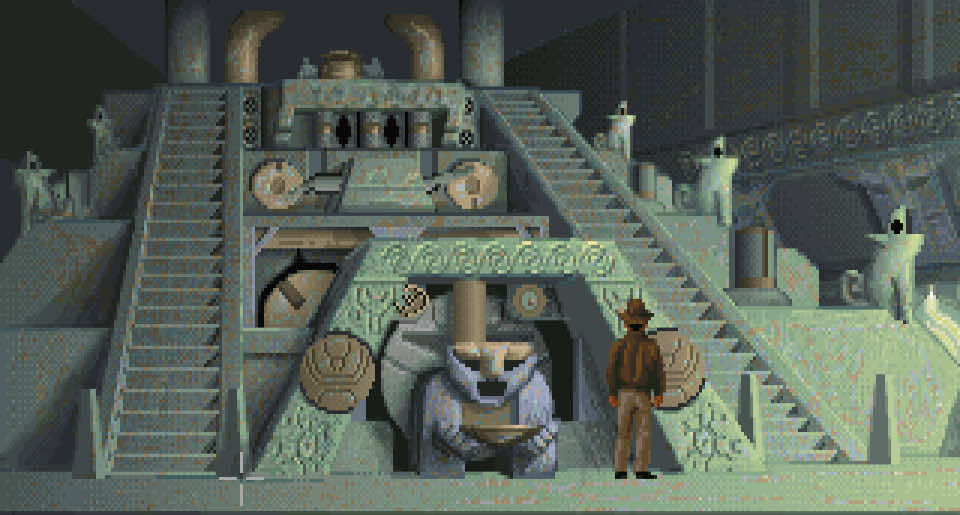
I decided to tell you how Hollow Earth Expedition made me think about creating an intriguing story to tell, going against some almost untouchable clichés. But let’s start from the beginning: in December I concluded a short Lex Occultum campaign. Unable to decide what to do next because of too many greedy possibilities, I presented twelve options to my players and the most voted was Hollow Earth Expedition. Now the campaign is about to begin and here I am, a few days after the first session, thinking about a story that is worth telling. And after having miserably failed a pulp plot a few years ago, the desire for redemption is very high. Therefore thanks to it I had the opportunity to reflect deeply on the subject.
The RPG of the situation: Hollow Earth Expedition
The first thing to do is to briefly introduce the game. Hollow Earth Expedition was released in 2006 by the Exile Game Studio and received several nominations for the Origins and the ENnies Awards.

It is set in the 30s and offers pulp adventures, then chases, shootings, exploration and much more, as long as it is all intriguing and sensational. In short: Indiana Jones, dinosaurs, crazy scientists and bizarre theories. The title and setting of the game is based on a theory, that of the Hollow Earth. Inside the Earth there is another world inhabited by dinosaurs, Atlanteans and other mysteries; this place represents the center or the ultimate goal of most adventures. But that’s not all: between secret societies on Earth and populations on Mars there are many other ideas.
The game uses the Ubiquity System, based on rolling several dice and considering each even result a success. Since each die has 50% to give a positive result it is an easy calculation and abstraction system. This allows for a fast and explosive game, just like the genre it wants to narrate.
The “problem” of free will
I know it may sound a little strange, however I have often found the excessive free will left to players in creating their characters a problem. Don’t get me wrong: players’ imagination and creativity are an incredible resource in storytelling. One of the main skills required of a narrator is that of being able to mix characters, background and plot. But can it always work? I think no.

Does confidence in the narrator allow players to accept the idea that their creativity is chained?
It’s true, there are games, settings, campaigns and stories that are perfect for making the creative choices of the players the pillars of an adventure. But there are other situations in which certain posts must be placed, certain situations must be channeled, some choices must be forced. In the name of what? In the name of creating a story, compelling, coherent and exciting. Obviously it must not be an imposition, but a mutual agreement. Players sacrifice part of their creative free will by trusting their narrator; the latter will be able to use the stakes imposed as the basis for a more complex narrative structure that would otherwise lack adequate foundations.
The starting conditions
So I wanted to create a story for Hollow Earth Expedition. I still did not have very clear ideas, but there were some certainties. Atlantis, orichalcum, Thule, exploration, Nazis, Hyperborea. It was a beginning, there was a principle of synergy between the parts, enhanced by the unique flavor recalled thinking about the hours spent in youth playing the beautiful Indiana Jones and the fate of Atlantis.



The creation of the characters took place via WhatsApp during the Christmas holidays, so that we can lay the foundations for a first game session. Luck smiled at me: the archetypes chosen by my five players were easily inserted into my campaign idea. Explorer, doctor, academician (archaeologist), occultist and businesswoman. The rest of the character creation was a smooth and smooth operation. A few small tips were needed to better create capable alter egos effectively inserted in the world and in history, but nothing more. But now I had two questions to solve: the background and the starting point.
The intermediate reasoning
The starting point is one of the key elements in building a story. Although it is perhaps of secondary importance compared to other moments of a campaign (and is easily forgotten after a few sessions), I believe however that a credible incipit lays the foundations for identifying the atmosphere of the campaign.

Sometimes the players are not too pretentious about the beginning of the adventure, rather eager to try out their new characters on the field. As a narrator, however, I have always given great importance to the beginnings. I’m ready to wear out neurons while not starting with “you’re all in the tavern” and its variants.
As the initial part of the campaign plot was slowly unraveling in my mind, I understood how free backgrounds would be difficult to insert, forced into being tied together. Of course, I could always try and see what the players would bring out, but having them write a background and then rape or trash it seemed to me even more cruel.
The final solution for story creation
Hollow Earth Expedition helped me in the final creation of the story. Characters’ Archetype and Motivation were decided. The first one has no mechanical influence: it’s justa a generic description. The Motivation instead dictates the main impulse that moves him. With only these two elements, I could create backgrounds instead of the players, while respecting their basic idea.
In this way the genesis of the zero point could be elevated to something more satisfying than being forced all together somewhere. So I decided to start by inserting one character at a time. At first the business woman contacts the occultist. Their meeting begins to spin the plot wheel and creates a connection for the archaeologist; however she’ll need the help of the explorer. And the opportunity to introduce the doctor would come later in the game. The first session will be more similar to a movie than role-playing. I hope in a long, natural and adrenalinic prologue in which to become familiar with the characters and get to know them.



However, after that the narrator’s grip loosens, because the role play and the actions of the players take over. My certainty is that their choices will be linked to those initial words that I really want to make real. The last problem was the waiting time of the player of the the doctor. Thus was born the bodyguard of the business woman, a temporarily playing character. With the arrival of his real character I will have an NPC already formed and interpreted. It would also remain as an aid in action scenes, possibly used by occasional players who want to even just to try the system. I haven’t done anything exceptional, but I’m satisfied with the result.



The end of the beginning of Hollow Earth Expedition
This Hollow Earth Expedition campaign was a pretext and the considerations on creating a story do not want to have any claim to absolute truth. I just want to reflect on how, sometimes, the freedom in the creation of the character risks undermining the beauty of a story. Regardless of the skill of a narrator.
This time I imposed backgrounds on players who, fortunately having esteemed my creative streak, gave me carte blanche. Other times greater freedom manages to give a different fulfillment, but I find that it is always good to put stakes. Role-playing is wonderful and wonderfully vast. There are too many aspects, facets, modalities and possibilities to be able to put them all on the table at the same time. Having some fixed points helps everyone to focus on something more homogeneous and the final result can only benefit from it.
Was it worth it to take control of the creation of the protagonists’ backgrounds? What secrets, plots, subplots and potential twists will it be possible to insert thanks to this device? We will find out only by roleplaying.


Trackbacks/Pingbacks